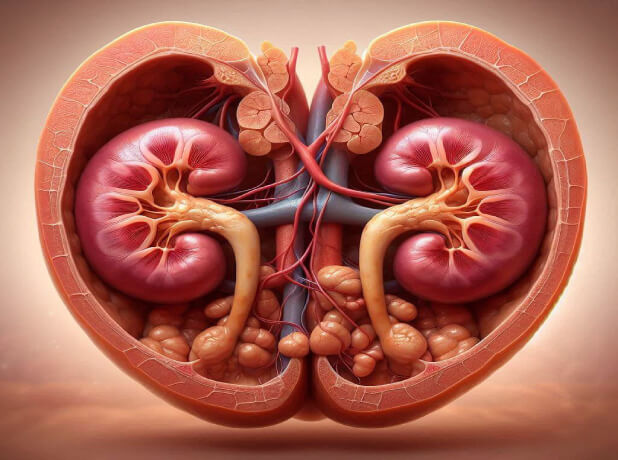Summary of “Exploring the Utility of Renal Resistive Index in Critical Care: Insights into ARDS and Cardiac Failure”
Abstract
The renal resistive index (RRI), a Doppler ultrasound-derived metric, offers a non-invasive window into renal hemodynamics, especially relevant in patients with acute respiratory distress syndrome (ARDS) and heart failure (HF). This narrative review explores RRI’s physiological underpinnings, measurement techniques, and applications. In ARDS, RRI reflects interactions among mechanical ventilation, hypoxemia, and systemic inflammation, showing promise for predicting acute kidney injury (AKI) and guiding therapeutic strategies. In HF, RRI helps evaluate venous congestion and serves as a prognostic indicator. Despite its strengths, challenges like operator dependence and lack of standardization limit its widespread use. Future research should focus on automated techniques, clinical integration, and validation of RRI-based decision-making.
Key Points
-
Measurement Methodology: RRI is measured through Doppler ultrasound by assessing peak systolic and end-diastolic velocities in renal interlobar arteries, offering real-time insights into renal vascular resistance and requiring standardized technique for reliable use.
-
Physiological Relevance in ARDS: RRI reflects the impact of positive pressure ventilation, inflammation, and hypoxemia on renal perfusion, correlating with PEEP levels and serving as a marker of renal stress in ARDS.
-
Clinical Role in ARDS: Elevated RRI values in ARDS patients, particularly in COVID-19, are associated with higher AKI incidence and mortality, correlating inversely with oxygenation indices like the PaO2/FiO2 ratio.
-
Fluid Management in ARDS: RRI changes in response to fluid administration can guide volume optimization, balancing fluid resuscitation with the prevention of renal congestion or under-perfusion.
-
Prognostic Value in Heart Failure: In HF, high RRI correlates with reduced ejection fraction and increased central venous pressure, providing prognostic information regarding renal congestion, response to therapy, and risk of rehospitalization.
-
Association with Right Heart Function: RRI is independently linked with indices of right ventricular dysfunction, such as tricuspid annular plane systolic excursion, making it valuable in assessing right-sided heart failure.
-
Comparison with Other Biomarkers: RRI outperforms or complements biomarkers like serum creatinine, cystatin C, and NGAL in AKI prediction and offers advantages in early detection due to its hemodynamic focus.
-
Integration with Other Ultrasound Tools: Combining RRI with VExUS and echocardiographic parameters enhances diagnostic accuracy for venous congestion and fluid responsiveness in critically ill patients.
-
Limitations and Confounders: RRI’s interpretation is influenced by factors like age, heart rate, blood pressure, and mechanical ventilation, requiring cautious clinical judgment and limiting its standardization across diverse settings.
-
Future Directions: Research priorities include standardizing measurement protocols, developing automated and continuous monitoring tools, integrating RRI with AI, and conducting interventional studies to validate RRI-guided management in ARDS and HF.
Conclusion
RRI is an emerging non-invasive, real-time tool in critical care that provides meaningful data on renal hemodynamics in ARDS and heart failure. While it offers promise in early AKI detection, prognosis, and therapy guidance, widespread adoption depends on overcoming technical, interpretive, and standardization barriers through robust research and clinical integration.
Open Access This article is licensed under a Creative Commons Attribution 4.0 International License, which permits use, sharing, adaptation, distribution and reproduction in any medium or format, as long as you give appropriate credit to the original author(s) and the source, provide a link to the Creative Commons licence, and indicate if changes were made. The images or other third party material in this article are included in the article’s Creative Commons licence, unless indicated otherwise in a credit line to the material. If material is not included in the article’s Creative Commons licence and your intended use is not permitted by statutory regulation or exceeds the permitted use, you will need to obtain permission directly from the copyright holder. To view a copy of this licence, visit http://creativecommons.org/licenses/by/4.0/.

